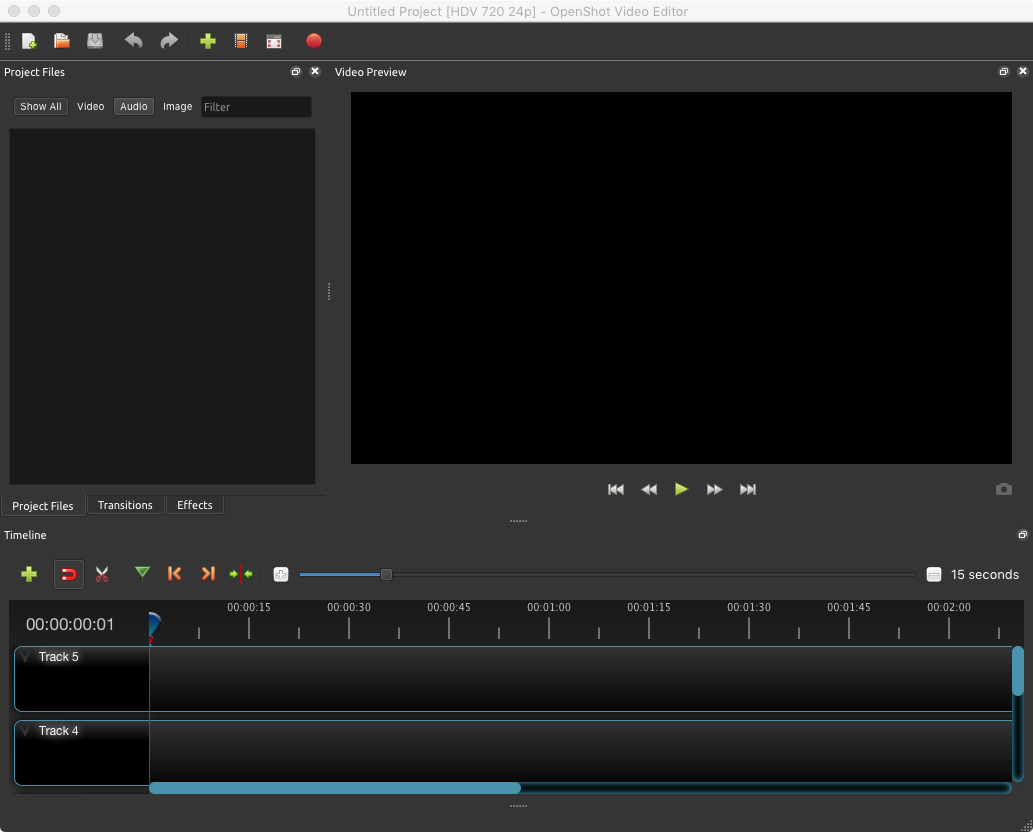
IMPORTING MOVIE FILES, EDITING AUDIO AND VIDEO CLIPS IN OPENSHOT AND IMOVIE
Note the following screen shots are based upon the class tutorial. The techniques are illustrated here in OpenShot for both Windows OS and Mac OS compatibilty. The same general techniques are also illustrated in iMovie available on the Mac OS only with some greater focus on editing audio.
I. Movie Editing With Sounds in Open Shot
For a more compete description of the process see the
getting started documentation OpenShot which can be found on the
following web site:
https://cdn.openshot.org/static/files/user-guide/quick_tutorial.html
For this example today, use the movie and audie files in the CLASSES examples folder named "iMovieTutorial Files".
1. Launch OpenShot by selecting the OpenShot Icon.

2. Select the "New Project" button under the file menu.
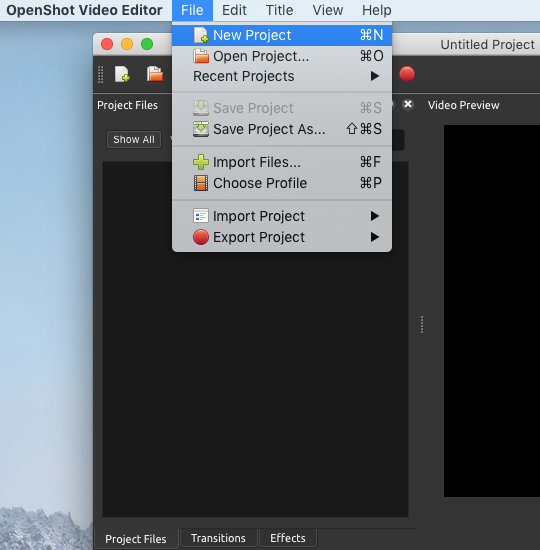
3. WIthin the same menu, use the "Save Project As" tool and name the project "MyMovie" and place it on your desktop folder.
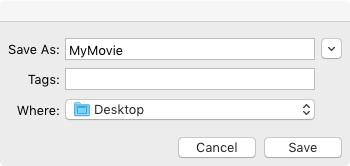
4. Next, use the Import Files Icon to import media into the project Files Part of the OpenShot program.
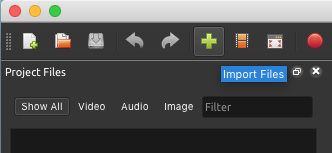
5. Browse to the folder with the tutorial files, select and import them with the "open" button.
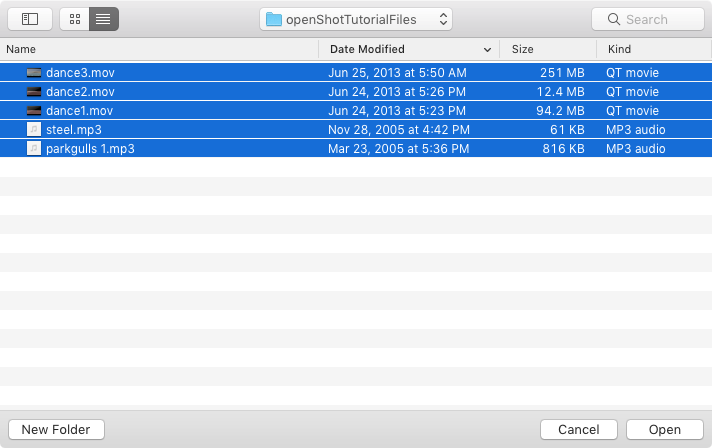
6. The media appear in the Project Files area of the OpenShot window and ready for drag and drop editing.
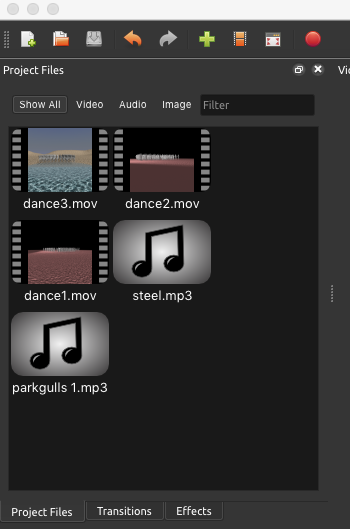
7. Select a movie clip from the Project Files area with by holding down the left-mouse button continuously and drag and drop it to track 4 in the Timeline area of the OpenShot application window.
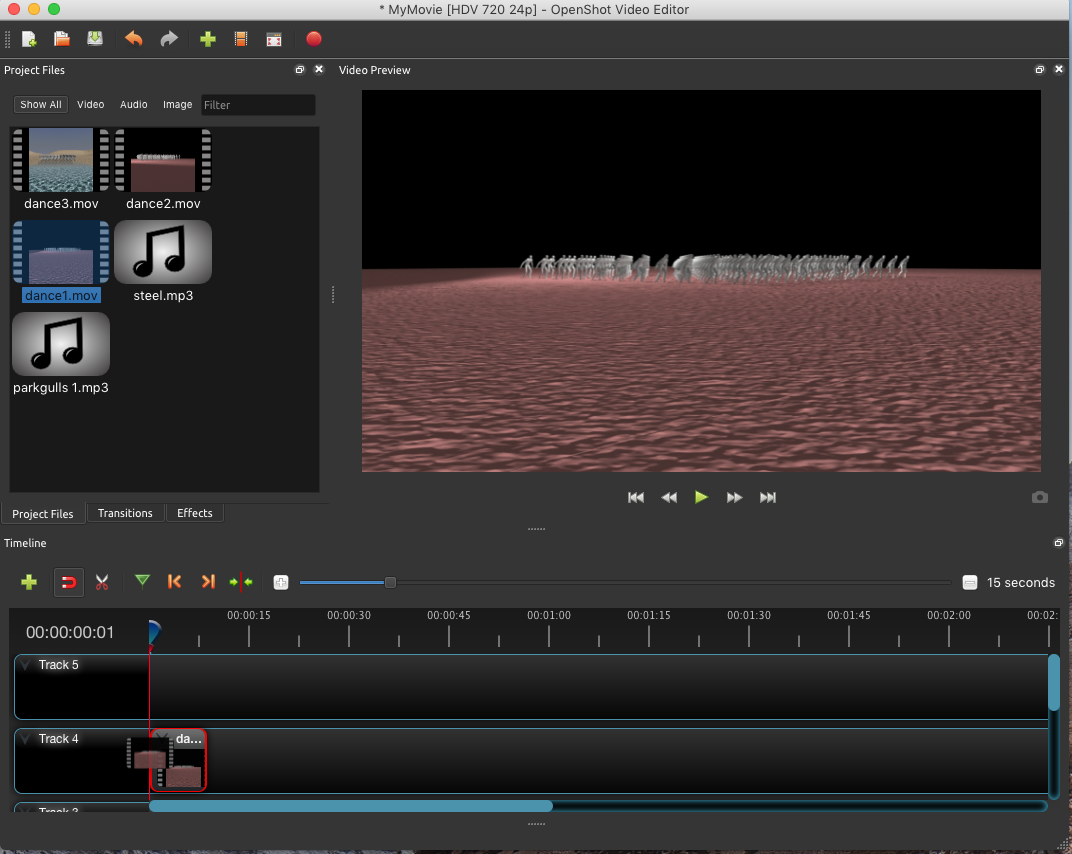
7. Drag and drop the additional video media files into the timeline below and place them in the sequence desired. Next, use the right pointing arrow in the window in the upper right corner of the application window to play through the resulting rough assembly.
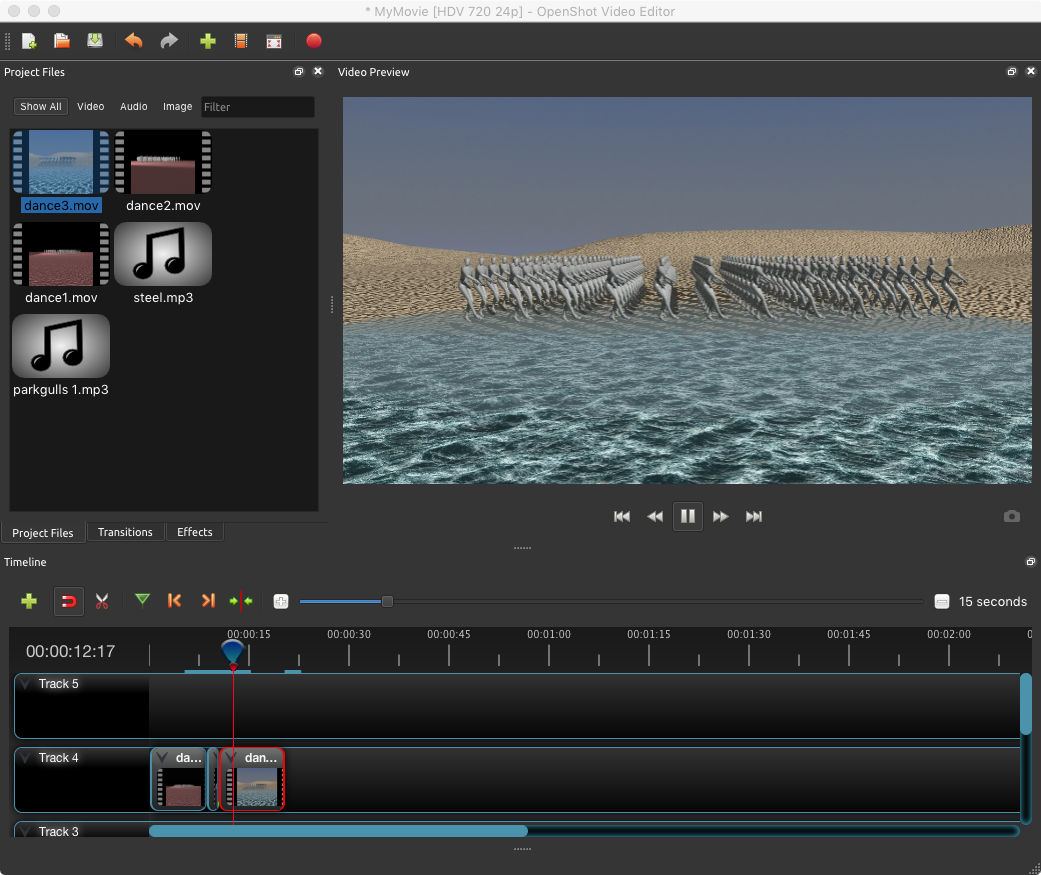
8. Expand the OpenShot application winow so that Tracks 3 and 2 and visible. Next, using the same select and drag technique, add any sound files to either one or both of these tracks. In the example illustrated here, parkgulls1.mp3 and steel.mp3 to are added to Tracks 3 and 2 so that their sounds overlap. The steel.mp3 audio file has a delayed start on the Timeline.
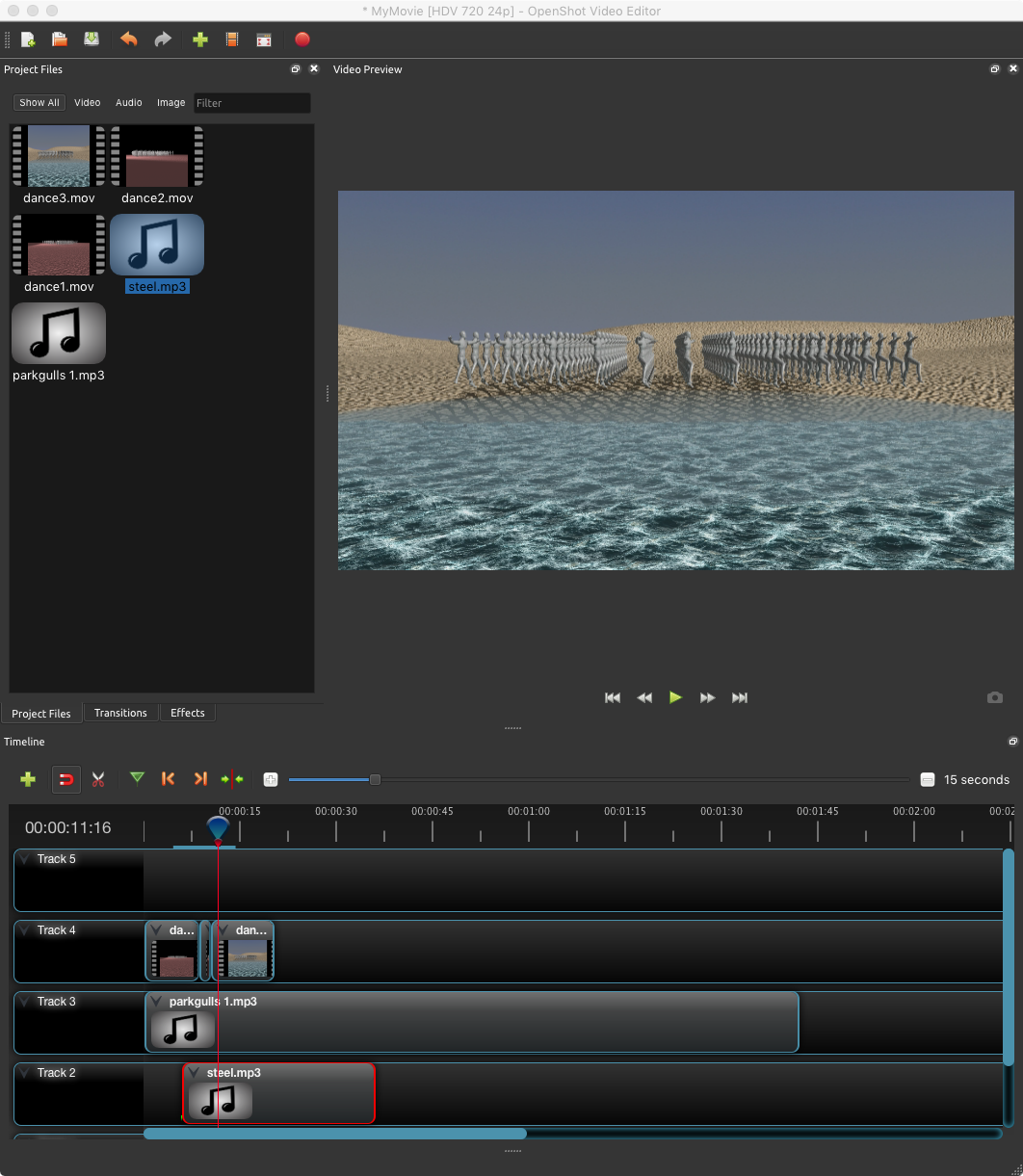
9. Go to transitions tab on the mid left side of the view window, and then add transitions if and as needed between movie clips. For example, to make this easier to follow, let's assume that dance2.mov doesn't seems to fit what we want and so we will replace it with a cross dissove transition between dranc1.mov and dance3.move. Thus, remove dance2, mov from Track 4 by selecting it and then using the delete button on the keyboard. Next, drag "Cross 10" to track 5 so that it overlaps with dance1.mov on track on track 4 be;pw, and reposition dance3.mov on track 5 so that it overlaps it with the "Cross 10" and two video clip "dance1.mov" on the track 4 below as follows so that they cross disolve effect is between "dance1.mov" and "dance2.mov".
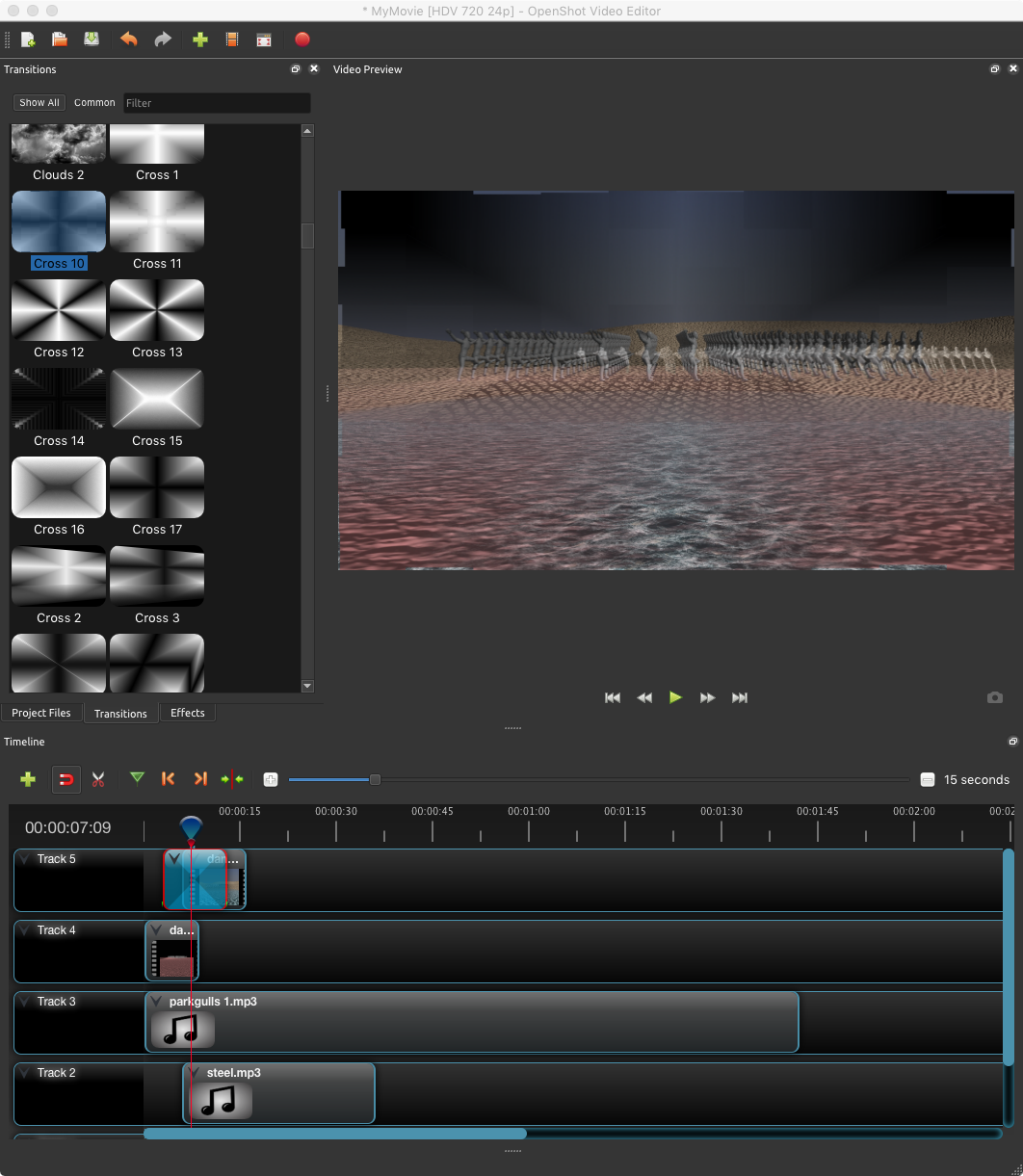
10. In this example, the left and right margins of the cross dissolve component can be dragged with the left or right mouse button to increase, or, as was done here, decrease the dissove area.
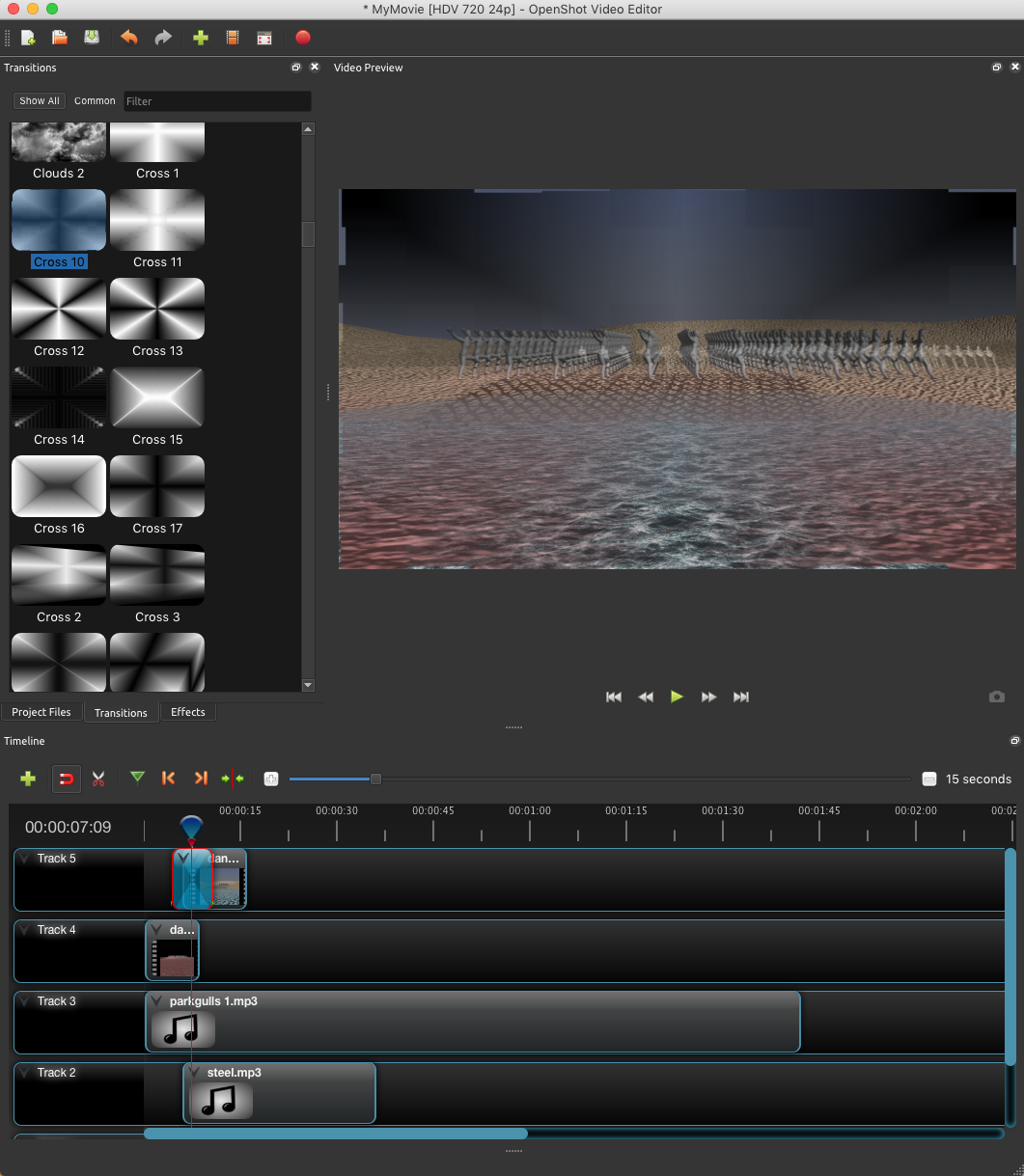
11. Alternatively, right mouse button on the cross-dissove icon on the timeline and select the "properties" option as shown below to be able to adjust the time length of the transition.
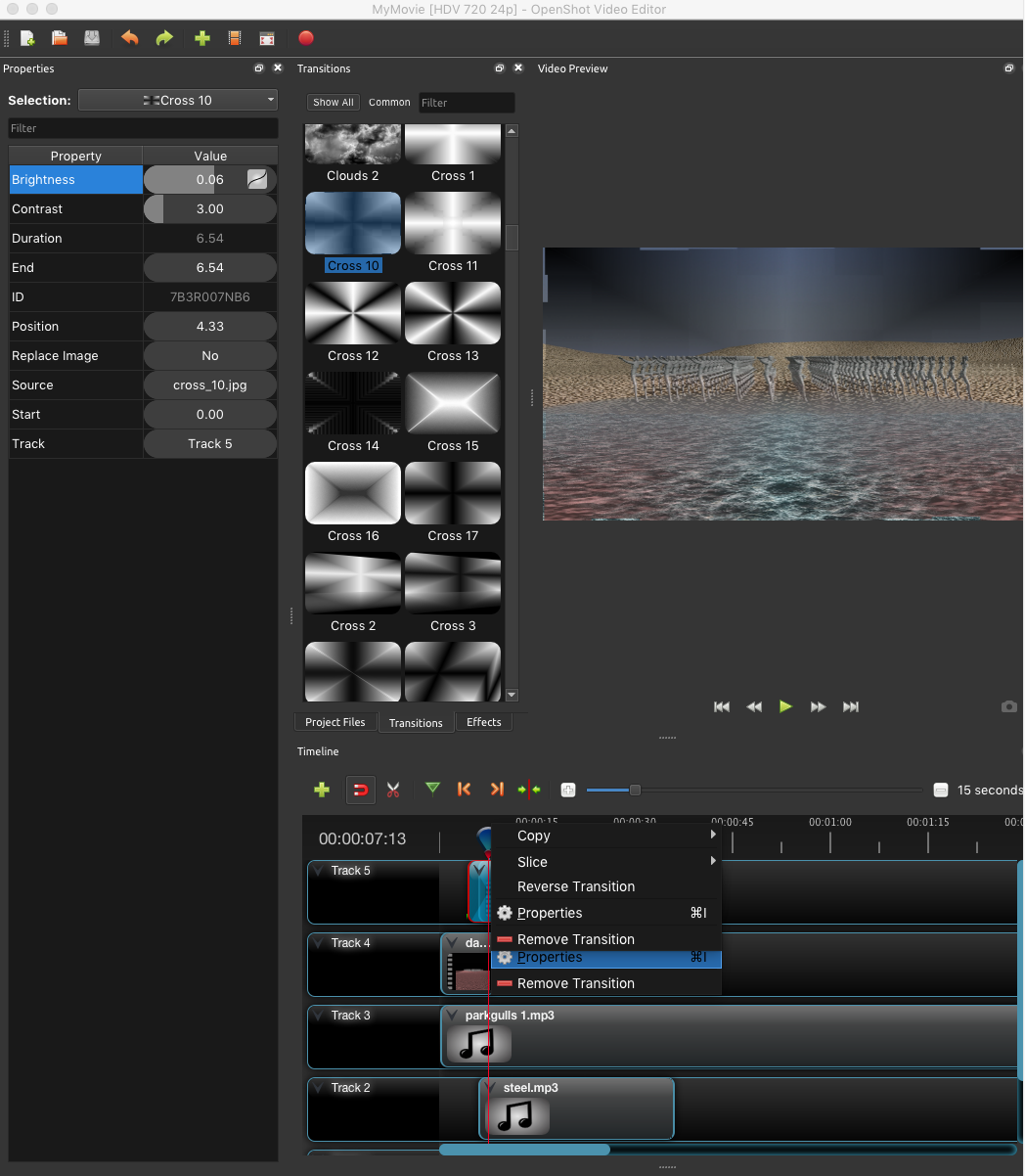
12. Here, for example, the end time is changed from 6.54 seconds on the time line to 6.1 seconds.
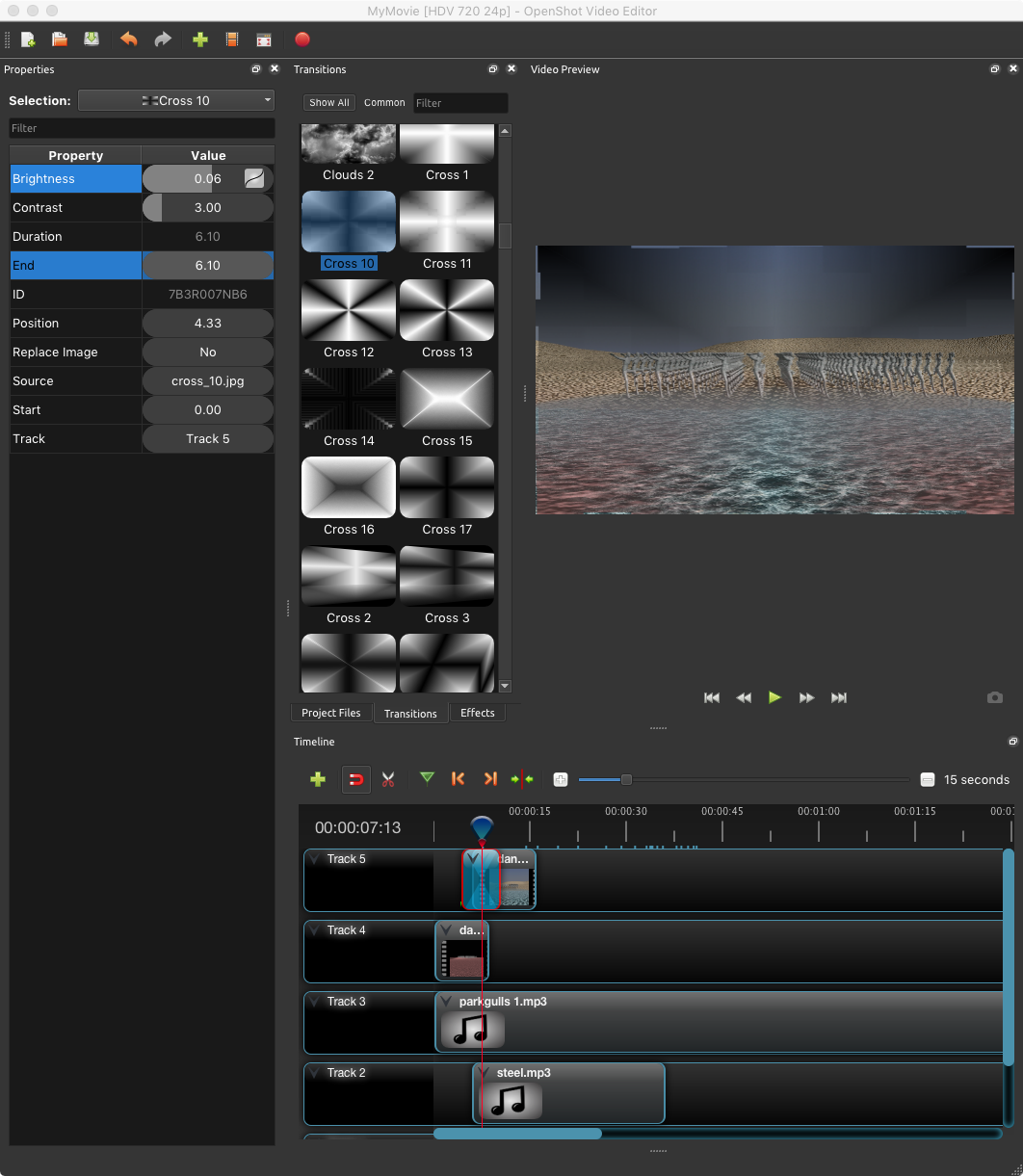
13. Similarly, go to the "TItles" menu from the menu to create and save a title so that it appears in the "Project Files" area. Overlay a title on the video or place it in its separate slot on the timeline (this technique is not fully illustrated here).
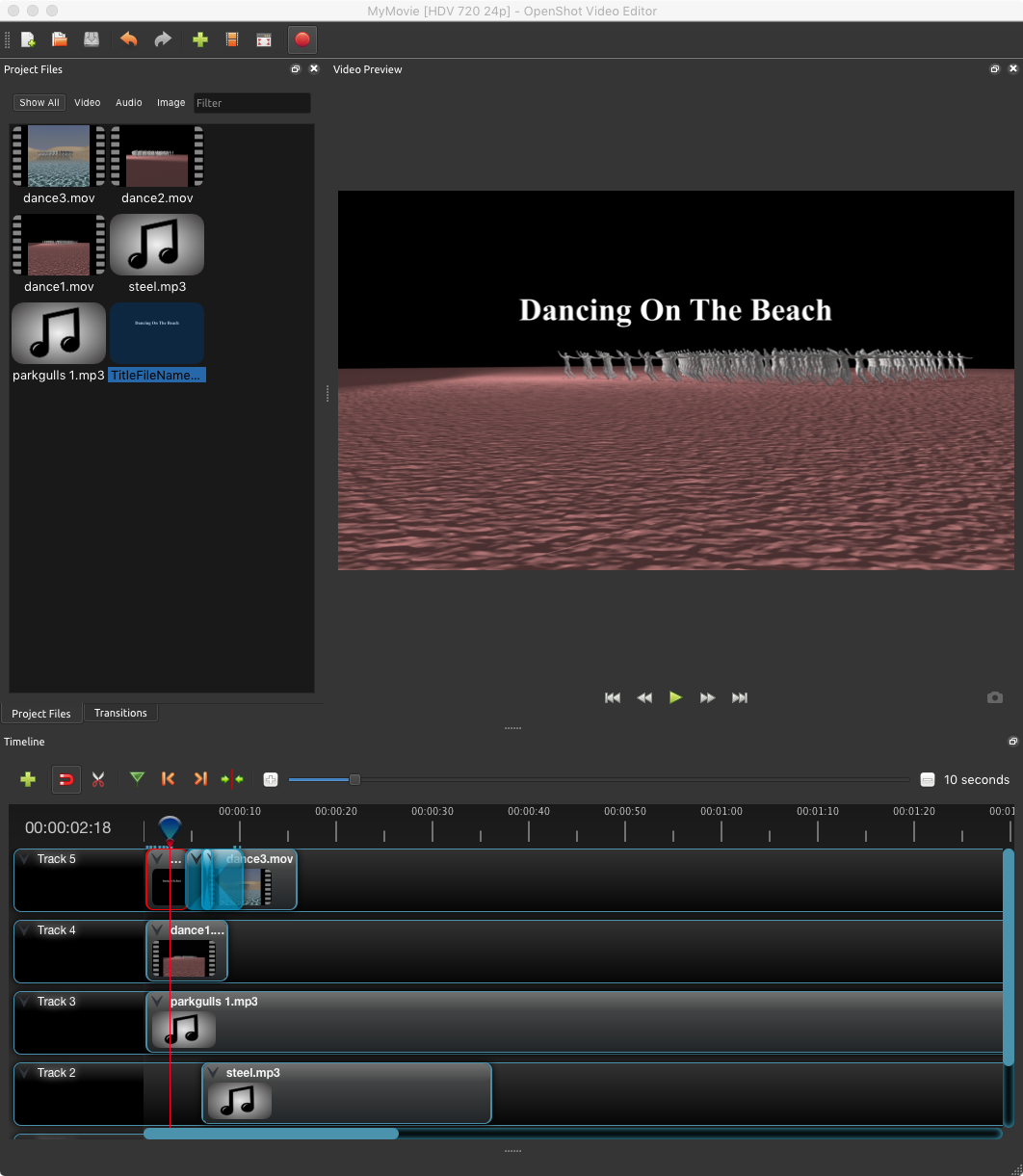
14. Audio tracks can be adjusted by selecting either edge of the audio file on the Timeline and dragging it. In the example below, both audio tracks are shortened by dragging their right edge from right to left.
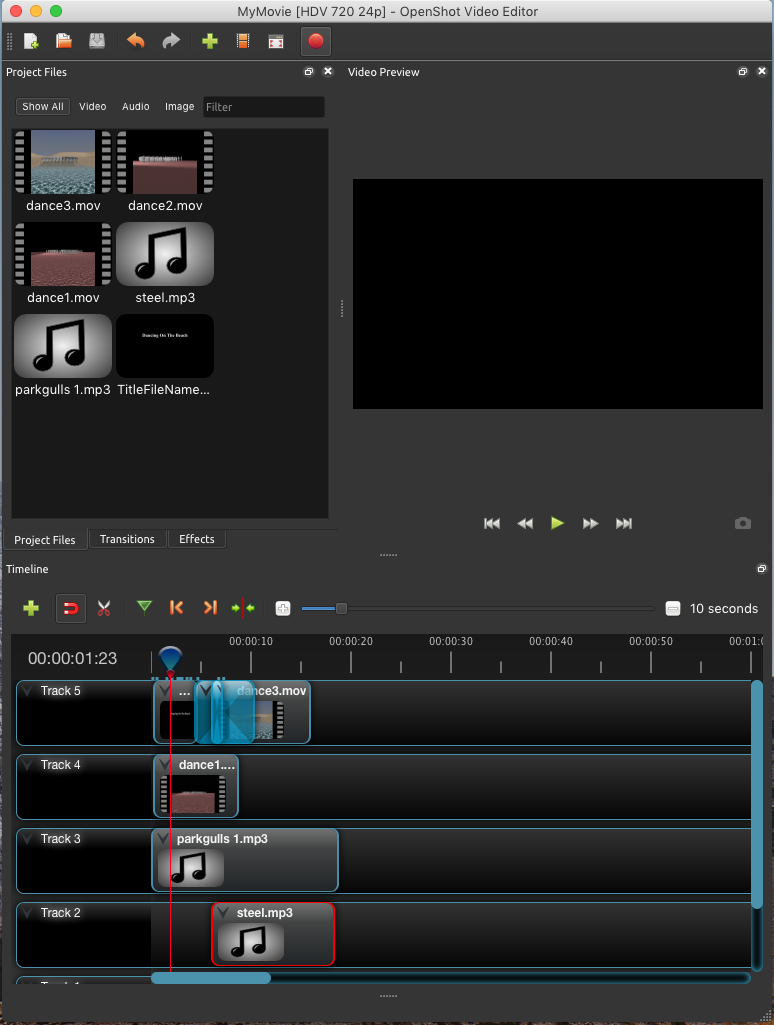
15. Finally, export the project according to the steps illustrated in workshop notes 2.
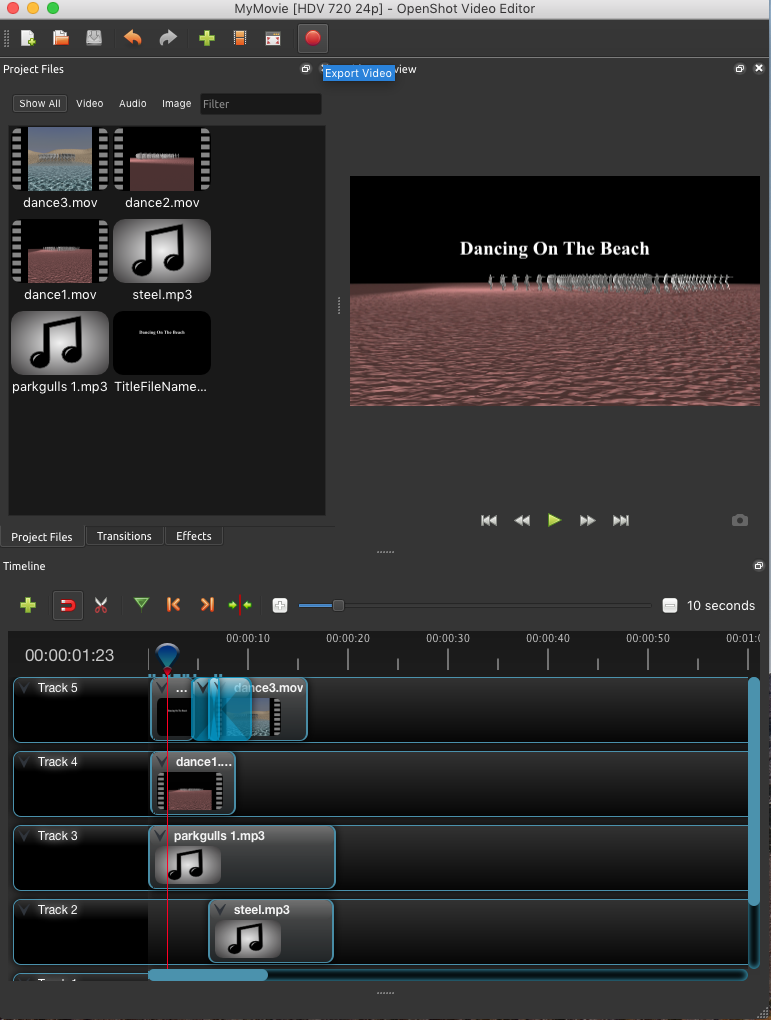
OpenShot has some sound editing and sound effect features that are documented on the OpenShot web site.
II. Optional Notes for Apple OS iMovie HD
Similarly, For a more compete description of the process see the
getting started documentation on iMovie which can be found on the
following web site:
https://help.apple.com/imovie/mac/10.1/
1. Open iMovie from within the Applications folder on a Mac.
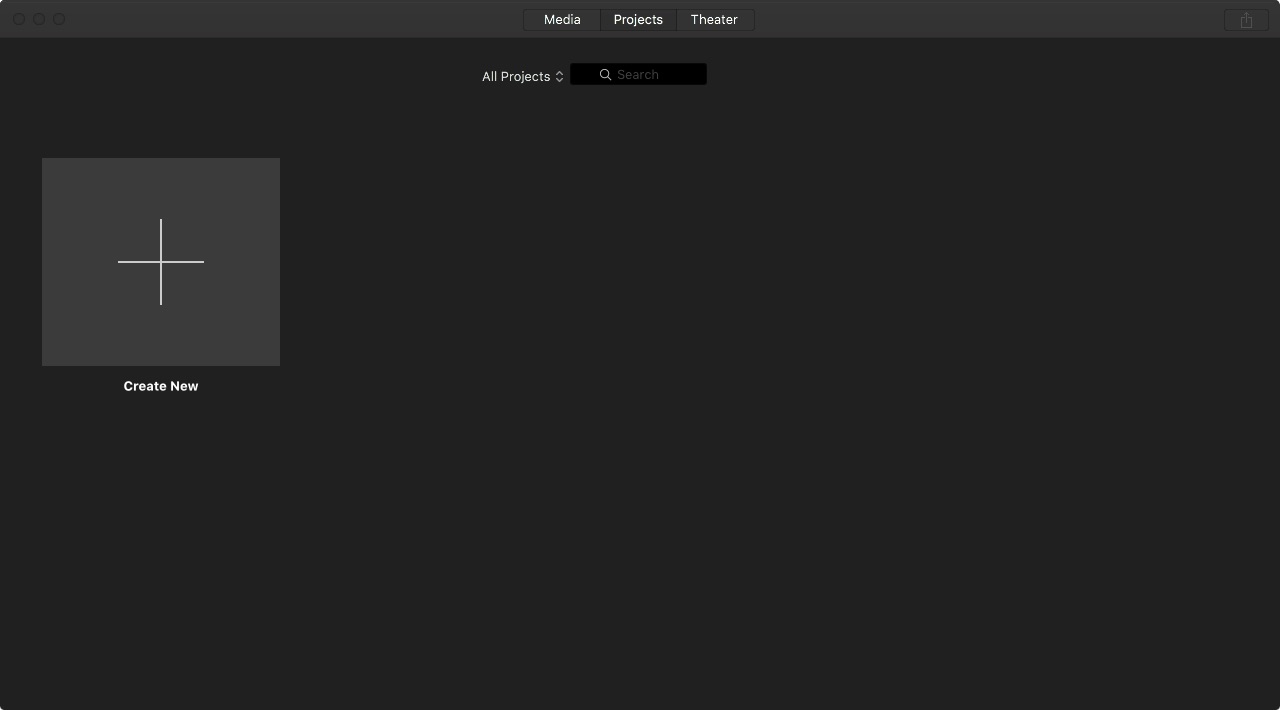
2. Select the "Create New" button above and choose the "Movie" (blue icon) option below.
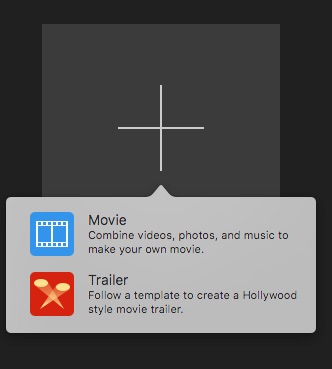
3. The movie editor and project window now opens.
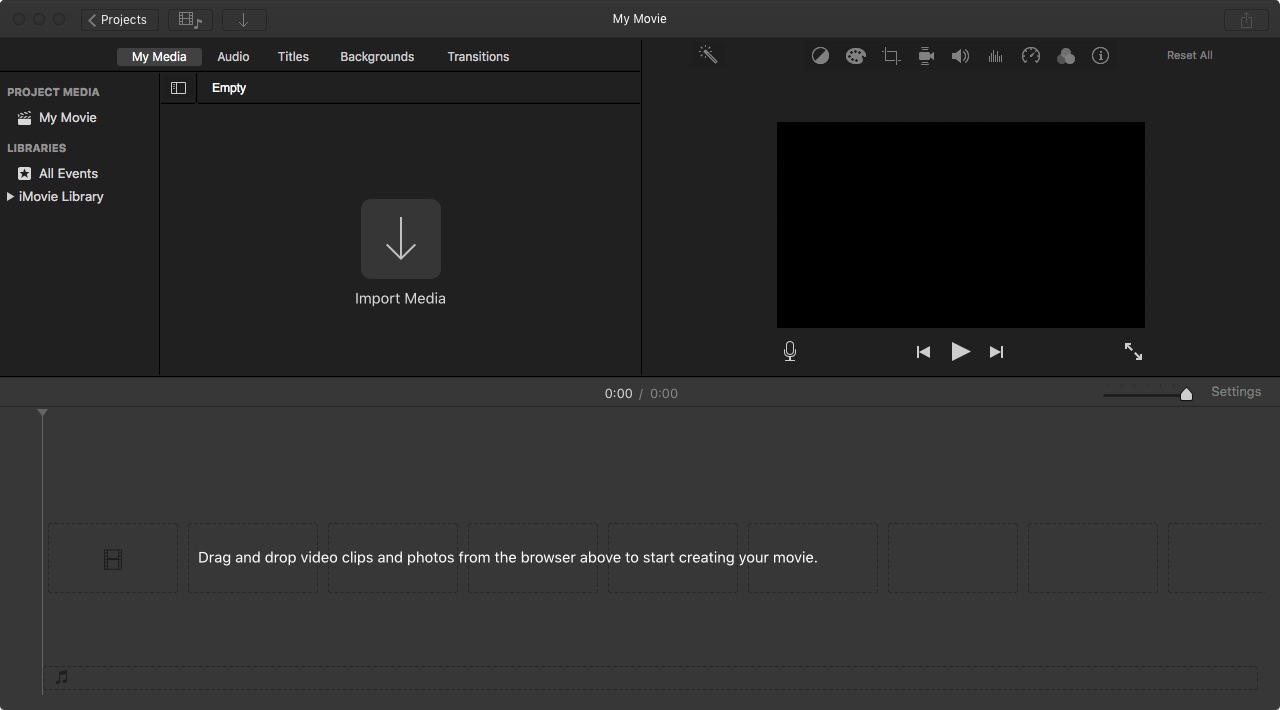
4. Import media to the browser browser window in the upper left-hand corner using the down arrow with the "import media" label in the image above and selecting the movie files in the dialog box that follows below.
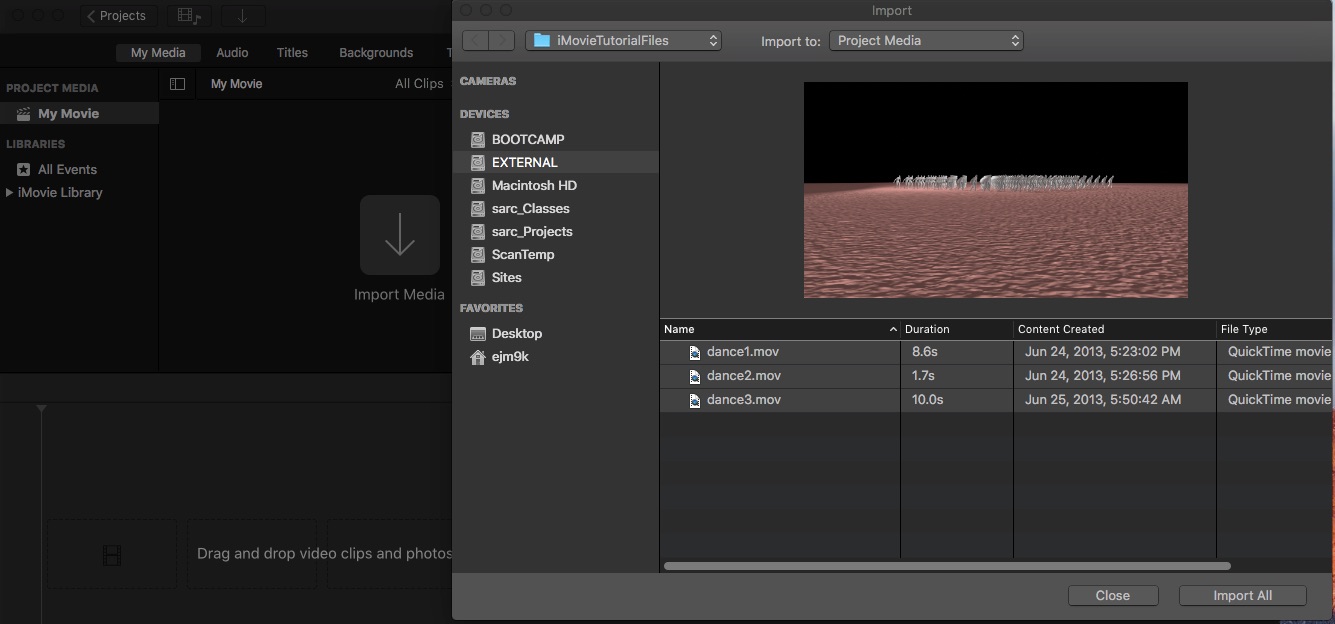
5. The media will then appear in the media browser window in the upper left corner of the iMovie Dialog box as shown in the following image.
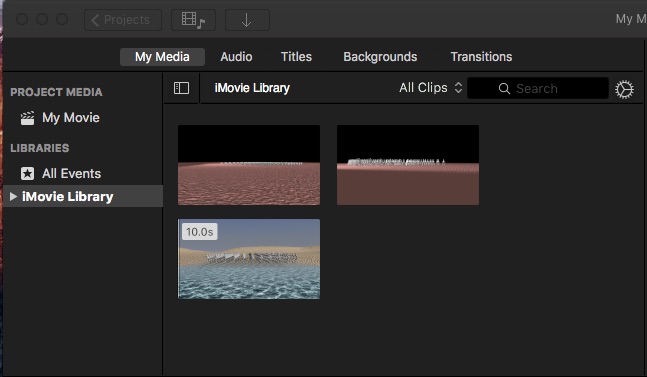
6. Note that when selecting a movie clip from the browser, drag the mouse through the portion of the movie clip desired so that it highlights in yellow as depicted below before dragging it to the timeline.
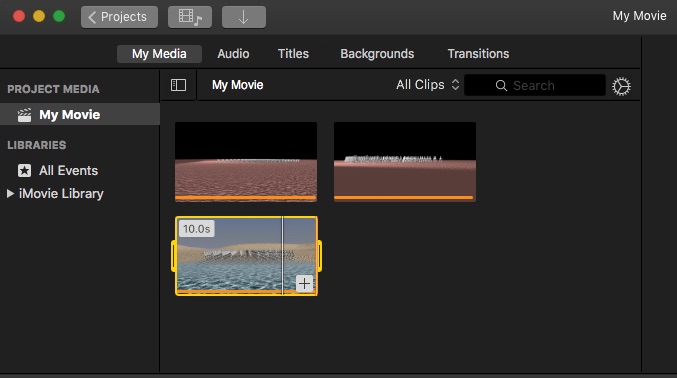
7. Drag and drop the media files into the timeline below and in the sequence desired. Next, use the right pointing arrow in the window in the upper right corner of the application window to play through the resulting rough assembly.
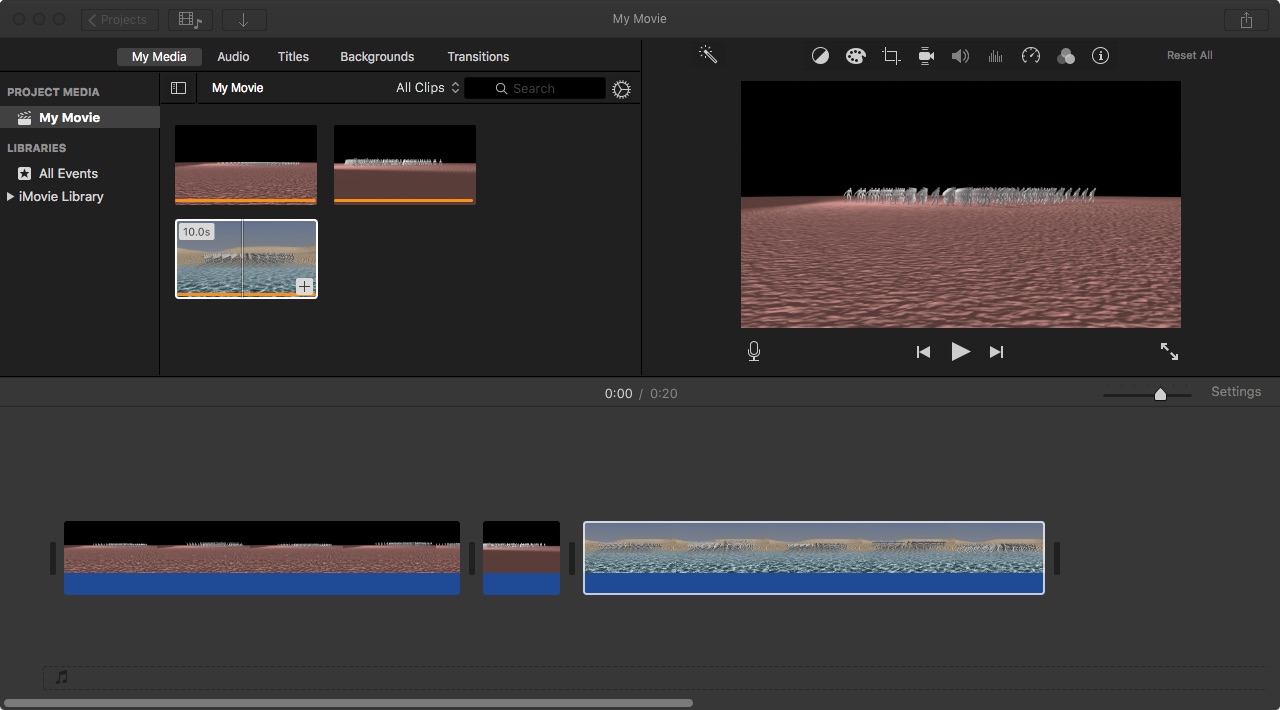
8. Note that it is also possible to mport and add additional movie files as needed through the "file /import media" menu item rather than via the "import media" symbol used in step 4 above.
9. Go to transitions tab on the upper left side of the view window, and then add transitions if and as needed between movie clips. For example, the "Cross Dissolve" transition is placed between the first two animation clips in the image below:
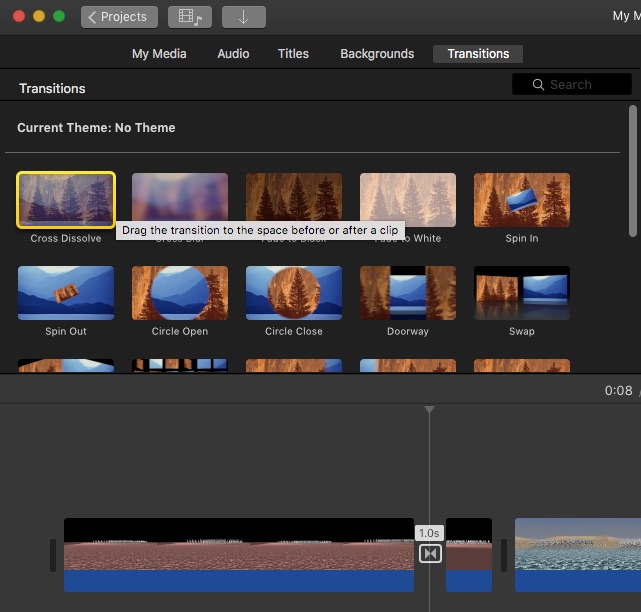
10. Double-click on the with the left mouse button on the cross-dissove icon to be able to adjust the time length of the transition.
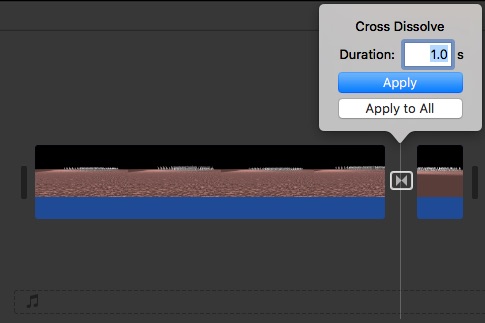
11. Similarly, go to the "TItles" tab from the same menu to overlay a title on the video or place it in its separate slot on the timeline (this technique is not shown here).
12. To add sound, drag a sound mp3 file from an external folder into the editor and place it in the timeline below the video track. The length of the sound track can be adjusted by clicking on the right hand edge with the left mouse button and sliding to the desired length.
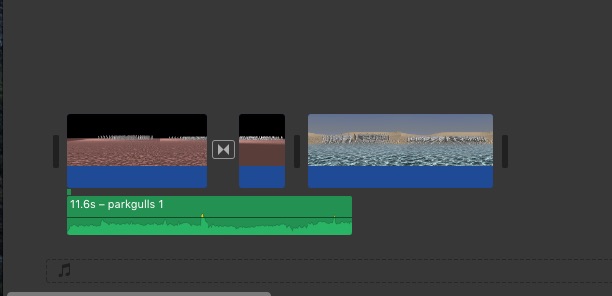
13. Add an additional mp3 file sound track below or to the right of the first sound track.
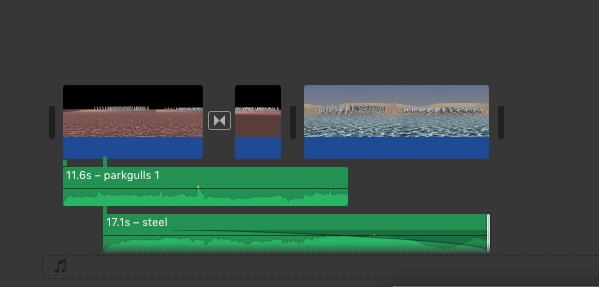
14. Select the inspector "i" symbol in the upper right hand corner of the iMovie window to make additional time length adjustments.

15. Select the three dot icon in the upper right hand corner and just to the left of the "i" symbol to add an audio effect.
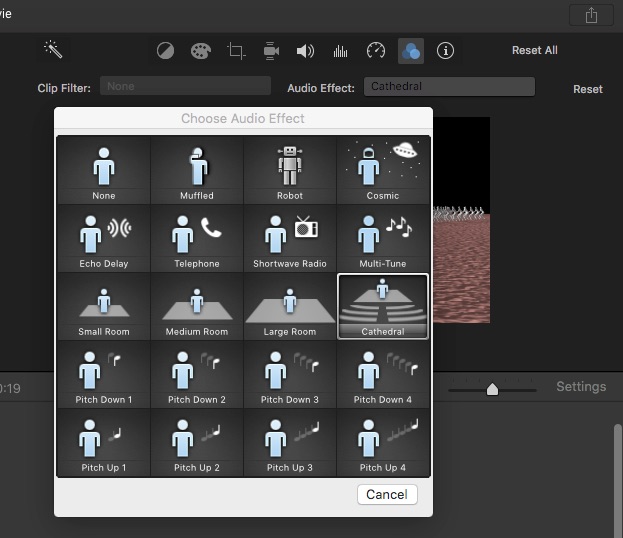 1
1
16. Select the vertical bars icon in the upper right hand corner to apply a preset equalizer effect (adjusts the apparent audibility of different sound frequencies). The "Flat" equalizer effect is chosen in the case depicted below.

Note that each of the sound tracks is separately editable via techniques 9, 10, and 11. above.
17. When editing is completed, go to the "File/Share / File " to compile the movie to the mp4 file format, select resolution and quality(high).
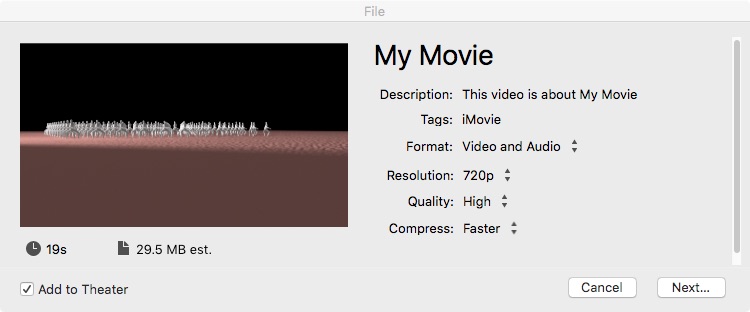
18. Select the "Next" button, name the file, and select the folder where to place it. Note that the mp4 format is automatically created as a result and the suffix "mp4" is added to the file name (e.g. "myMovie.mp4").
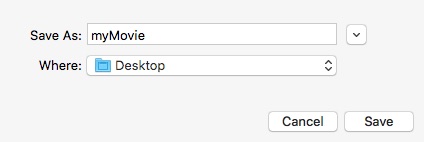
19. On the Apple OS, it's convenient to sse the Quicktime player to playback the mp4 file to confirm quality.
20. NOTE: Moving an iMovie project from One Computer to Another.
iMovie edit files is portable from one apple Computer to another; hoever, the process is slighlty more complex than saving a single file. The details here are excerpted from Apple's web site . https://support.apple.com/en-us/HT203049.
iMovie libraries should not be placed in a folder that syncs with online storage services such as iCloud Drive, Dropbox, or Google Drive, as this can damage some libraries. Before you move iMovie library, it's a good idea to back it up. Learn how in Mac Basics: Time Machine backs up your Mac.
To vove your library, the steps are as follows: